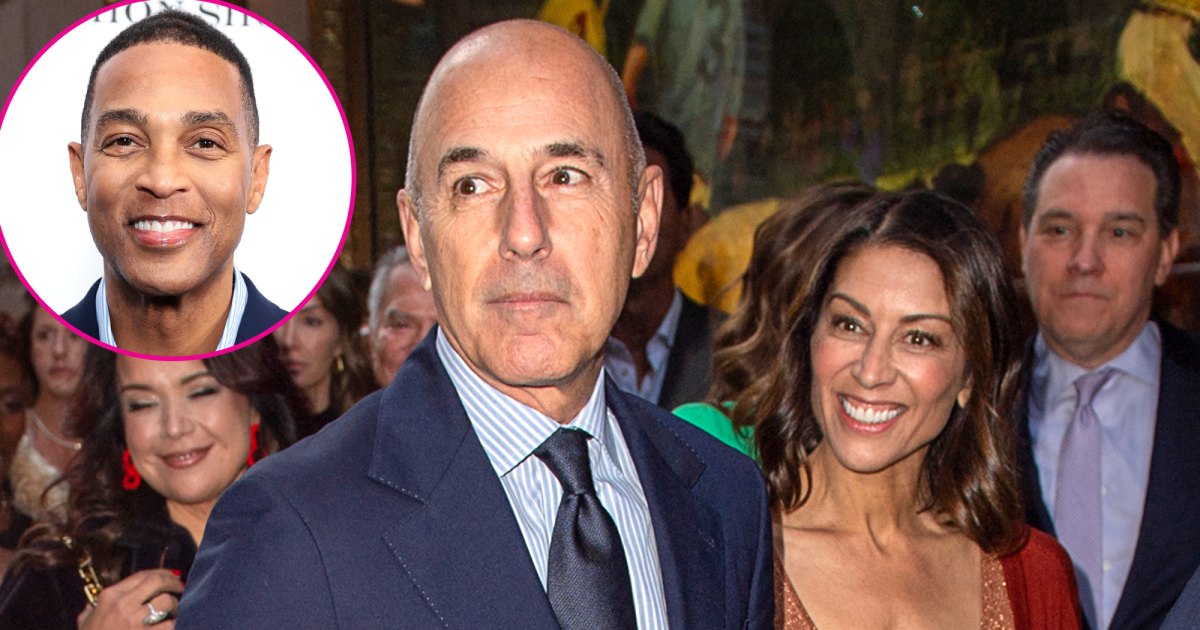KB Home CEO Jeffrey Mezger is certainly no housing newbie. He has seen just about everything in his 17 years as the homebuilder’s top executive, including the “housing bubble” and subsequent crash in 2008. However, even with all that tenure, he had never witnessed the housing market turn on a dime as it has so many times since spring 2020.
“It has been an incredible pendulum swinging back and forth ever since the pandemic hit,” Mezger tells Fortune. “If you go back to 2019 and leading into the pandemic in January 2020, our business was very good, and then it stopped [during the lockdowns], and you navigate that and then buyers came back with a vengeance that summer…and then the Fed decides [in 2022] they’re going to stop housing and jacks up [interest] rates, and it [housing] stops again. Those were really dramatic shifts in a really short period of time. Normally it is a slower shift in trend that takes months, and in this case it was days.”
This year, the new construction market once again turned on a dime, Mezger says, as homebuyers—who were finding few options in the inventory-constrained existing home market—turned to builders. That demand rebound translated into U.S. new home sales rising 31% on a year-over-year basis in July 2023, after falling 29% on a year-over-year basis in July 2022.
KB Home, ranked No. 518 on the Fortune 1000, experienced the demand rebound firsthand, with net orders bouncing back this spring. In fact, KB Home’s net orders for the three-month period ending on May 31, totaling 3,936 homes, were on par with the number of homes the company sold in the same three-month period in 2022, which was 3,914 homes.
“We turned the corner into 2023, and the [new home] market came right back…and we’ve been pleasantly surprised with how strong 2023 has been, when you put it into the context of how [mortgage] rates have continued to tick upward,” Mezger tells Fortune.
But can homebuilders actually maintain this sales rebound? After all, housing affordability has deteriorated to levels unseen since the housing bubble. To better understand what might come next, let’s start by taking a detailed look at how, according to Mezger, we got here.
At the onset of the COVID-19 lockdowns, builders’ cancellation rates soared, only to quickly plummet once the housing market started to boom in the summer of 2020 amid the work-from-home and stimulus-driven frenzy. A prime example is KB Home, which witnessed its cancellation rate in Q2 2020 jump to 43%, up from 15% in Q2 2019, only to drop to 9% by Q2 2021.
However, as mortgage rates spiked from 3% to 7% in 2022, cancellation rates began to soar once more. At the height of last year’s housing slump, KB Home’s cancellation rate reached a staggering 68% in Q4 2022.
The cancellation rates that builders report to the U.S. Securities and Exchange Commission often cause confusion. These so-called “can rates” are calculated as cancellations divided by gross orders (not cancellations as a percentage of backlog). Therefore, if gross orders experience a sharp decline, Mezger explains, cancellation rates can soar even if cancellations themselves remain flat.
While KB Home’s 68% cancellation rate in Q4 2022 was primarily driven by gross orders pulling back sharply, Mezger says, there was a small uptick in buyers pulling out of deals.
“It’s up to each buyer to lock their interest rate, and if they elected to not lock their interest rate, and play the market, so to speak, and then rates went from 3.5% to 6.5%, in some cases their payment changed so much that either they didn’t qualify or they no longer wanted to purchase. We did have some of that,” Mezger says. “It’s emotional if their payment moves the way it did last summer, where as much as they want the home, they say ‘I’m not paying an extra $600 or $800 per month for the home’ and so out they go.”
An uptick in buyers pulling out of deals wasn’t necessarily a terrible thing for homebuilders. After all, builders get to keep the deposit if buyers back out.
“So we had buyers that would walk. When we start the home the deposits are nonrefundable. We had buyers walking on $20,000 or $30,000 earnest money deposits because they no longer wanted the home, and it was emotional cancellation. If you look at financials, we had millions of dollars in retained deposits on those cancellations,” Mezger tells Fortune.
This year, KB Home’s cancellation rate quickly decelerated to 36% in Q1 2023—down from 68% in Q4 2022—and all the way to a normalized rate of 22% in Q2 2023.
How did KB Home get its cancellation rate way down? The builder got single-family home sales rolling again.
As the U.S. housing market began to slump last year, builders started to reduce their profit margins—which had grown to record levels during the Pandemic Housing Boom—to do things that would entice buyers back into the market. For some builders, that meant offering aggressive rate buydowns, which in some cases lower buyers’ mortgage rate below 5%, or they offer money at close. In some communities, builders did outright price cuts.
Unlike D.R. Horton CEO David Auld, who told Fortune they’ve leaned heavily into mortgage rate buydowns, Mezger tells Fortune that KB Home opted to do more outright price cuts.
“Across our whole footprint, [house] pricing is down about $40,000 from the peak; we got as high as $540,000 [average home price] and now we’re right around $500,000. So we’re off 9% to 10%,” Mezger tells Fortune. “In our [KB Home’s] business it’s primarily [house] price cuts, we don’t do a lot of incentives… We believe in giving the buyer the best value. So we will typically do it in price if we’re going to adjust.”
Those house price cuts, or lack thereof, varied significantly by market and community. (Here’s a map of KB Home’s market presence.)
“Sometimes the media will target a market and say it’s bad, and we’re in that market going, ‘Hey, it’s actually pretty good.’ In part, it depends on where in the cities you’re building, and the price point [you’re] building at, because demand can move up and down the price ladder in every city,” Mezger says.
Mezger says the Inland Empire market, in particular, has been resilient over the past year.
“There was a lot of media coverage on how difficult California was, and yet our Inland Empire division, which is San Bernardino and Riverside counties, the commuter corridor east of Orange County and L.A. County, they didn’t really slow down, our market demand held extremely well through the rough patch and has continued to perform well today. It’s a great example of strong demographic demand, large population, and large desire to be a homeowner. And there’s no inventory of new and used homes,” Mezger tells Fortune. “If you go over to Florida, the whole state is very good right now. I can’t think of any part of Florida, where we’re like, ‘That’s a tough market.'”
The weakest market for KB Home? Denver.
“If you go to the other end for us, the market where the premium to resale got too far out there, and the market has been correcting, and it has been difficult for the industry, would be Denver. Where prices just moved very quickly, and moved away from affordability, and we’re continuing to adjust there and demand remains a little more sluggish than average and certainly more sluggish than we see in the Inland Empire,” Mezger says.
What happened in Denver? New home prices simply got too far ahead of existing and resale home prices.
“In normal times, we’ll have a 10% to 15% premium over resale [prices] in that ZIP code, it’s that localized. If you have a 2,000-square-foot home in Phoenix, and the resale is $300,000, ours will be [priced at] $340,000 to $350,000 in normal times. When the market was running prior to Fed rates going up, and mortgage rates going up, in some locations our premium got as high as 30% over resales in certain areas. So then you’re out of whack with your biggest competition, which is resale. You can do it as long as it works, but once the market starts to normalize, you have to come down. Over time it tends to revert to the means, which is a 10% to 15% premium over resale,” Mezger says.
Price point matters a lot too, Mezger says, especially with higher-end homes having taken a bigger hit in many markets. As an example, he points to Austin, one of the few markets where existing home prices have dropped by over 10% since the peak in 2022.
“Austin, depending on the price point, we’re doing okay or average. But we’re at a lower price point in Austin. Our average sales price in Austin is about $350,000 to $380,000. At the higher price points above us, they’ve slowed down a bunch, and prices have come down pretty significantly on the higher priced homes [in Austin] because it moved up so fast and it moved away from resale [prices] and it’s out of whack,” Mezger says. “It’s a great example of how each market is localized, and the dynamics are different.”
One reason builders were quick to cut prices and offer buydowns: They were worried about their large backlogs. Amid the Pandemic Housing Boom, builders’ backlogs soared as supply-chain issues meant they were selling homes faster than they could build them.
However, over the past year, builders have slowly worked those backlogs back down (see chart above).
Look no further than KB Home, which at the height of the Pandemic Housing Boom had a backlog of 12,331 homes in Q2 2022—up from 5,927 homes in its backlog in Q2 2019. As of Q2 2023, KB Home’s backlog is down to 7,286 homes.
“At any given point in time we have a very large number of homes in backlog in the system. So when sales slow up, we have a large backlog, and we’re sensitive. This time last summer when rates ticked up and sales slowed, our backlog was over 11,000 homes. They were at very high [profit] margins, but if we did things [cut prices] and chase sales/go find the market, you put 11,000 homes in the backlog at risk of adjusting price on those homes as well,” Mezger tells Fortune.
Simply put: If buyers in the backlog see new buyers getting huge discounts, they’ll also come asking for those discounts. That’s why, Mezger says, KB Home waited until closer to January—when its backlog had come back down—to start slashing prices and juicing up gross orders.
“We turned the corner into January, and we had bled the backlog down, and were then in a position where selectively on a community-by-community basis we would pull the lever whether it was financing or adjusting price or offering different products, or whatever, to get sales going again. And that’s what you saw happen with us as sequentially our orders have been stronger each month of [the first half of] 2023,” Mezger tells Fortune.
But can homebuilders actually maintain this sales rebound? And will this home price “bottom” actually stick?
Here’s the long answer Mezger gave for why he thinks the “bottom” is already in.
“I shared it on our last earnings call, once we, quote, ‘found the market’ and got our sales pace back, we’ve been raising [home] prices across the footprint and in the second quarter reported that we raised prices in 70% to 75% of our communities during the second quarter. I would say the bottom is in. It’s being caused, if you go macro for a minute, it’s a story that’s true in every city we operate in, there is no [existing] inventory out there… In an average year there are about 5.2 million resales, and there is normally six months of supply. So if you have 5.2 million resales you’d have 2.6 million listings around the county. Today it’s being quoted in months of one month, 1.2 months—so instead of 2.6 million homes to choose from, it’s 500,000 homes. And of that 500,000 listed, a chunk of that isn’t even livable, it’s homes that would have to be acquired and torn down and rebuilt. So the resale stock, which is our biggest competitor, has no inventory. There are markets in our price point that it [months of supply] is instead being quoted in days: 11 days, 12 days of resale supply. Our, historically [speaking], biggest competitor doesn’t have any inventory, and on the build side, with all the supply-chain issues and everything we went through, we never caught up. So there is a shortage of new homes and resale homes that are fueling a lack of inventory; at the same time we have strong demographic demand from the millennials and Gen Zs now hitting homebuying years. So when you have strong [demographic] demand, and no inventory, and even though rates have moved up, demand is still strong enough that buyers adjust to the [mortgage] rates and sales remain robust,” Mezger tells Fortune.
Peak to trough, KB Home reduced house prices by around 9% to 10%. As of July, KB Home is only about 4% to 5% below its 2022 price peak, Mezger says, and he believes they could reach that peak again in 2024 if the housing market continues on its current trajectory.
But what if he’s wrong, and builders do indeed need to cut prices further? Mezger says the metric to watch would be inventory, in particular “months of supply.”
“The barometer we’ll keep an eye on is inventory levels; if it [months of supply] starts to tick up in a hurry, you’d stop raising prices and focus on selling homes,” Mezger says.

Want to stay updated on the housing market? Follow me on Twitter at @NewsLambert.


















:quality(85):upscale()/2023/09/13/661/n/1922564/e914a1066501cc897903d6.08615338_.png)









